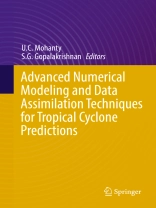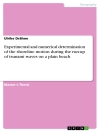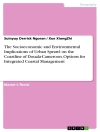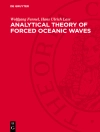This book deals primarily with monitoring, prediction and understanding of Tropical Cyclones (TCs). It was envisioned to serve as a teaching and reference resource at universities and academic institutions for researchers and post-graduate students. It has been designed to provide a broad outlook on recent advances in observations, assimilation and modeling of TCs with detailed and advanced information on genesis, intensification, movement and storm surge prediction. Specifically, it focuses on (i) state-of-the-art observations for advancing TC research, (ii) advances in numerical weather prediction for TCs, (iii) advanced assimilation and vortex initialization techniques, (iv) ocean coupling, (v) current capabilities to predict TCs, and (vi) advanced research in physical and dynamical processes in TCs. The chapters in the book are authored by leading international experts from academic, research and operational environments. The book is also expected to stimulate critical thinking forcyclone forecasters and researchers, managers, policy makers, and graduate and post-graduate students to carry out future research in the field of TCs.
สารบัญ
Part 1: State-of-the-art Observations for Advancing TC Research.- 1. Advancing the Understanding and Prediction of Tropical Cyclones Using Aircraft Observations.- 2. Use of Satellite Observations in Tropical Cyclone Studies.- Part 2: Advances in Numerical Weather Predictions for Tropical Cyclones.- 3. Overview of the NOAA/NCEP Operational Hurricane Weather Research and Forecast (HWRF) Modelling System
4. Physical Processes in Tropical Cyclone Models.- 5. Sub-Grid Vertical Turbulent Mixing in the Atmospheric Boundary Layer.- 6. Air-Sea Turbulent Flux Parameterizations in Tropical Cyclone Models
7. Present State of Knowledge of Electrification and Lightning within Tropical Cyclones and Their Relationships to Microphysics and Storm Intensity.- 8. The Role of Land Surface Processes on Tropical Cyclones: Introduction to Land Surface Models.- 9. The Role of Land Surface Processes on Extreme Weather Events: Land Data Assimilation System.- 10. Ocean Component ofthe HWRF Coupled Model and Model Evaluation.- Part 3: Advanced Assimilation and Vortex Initialization Techniques.- 11. Introduction to Data Assimilation Techniques and Ensemble Kalman Filter.- 12. Data Assimilation and Predictability of Tropical Cyclones.- 13. Data Assimilation: Comparison and Hybridization between Ensemble and Variational Methods.- Part 4: Monitoring and Prediction of Tropical Cyclones.- 14. Operational ACCESS-TC: Vortex Specification, 4DVAR Initialization, Verification and Structure Diagnostics.- 15. Physical Initialization in Tropical Cyclone Forecasting.- 16. Monitoring and Forecasting of Tropical Cyclones over North Indian Ocean.- 17. Operational Tropical Cyclone Forecasts Models at IMD and Their Performance.- 18. Tropical Cyclone Research over the North Indian Ocean: Impact of Data and Vortex Initialization in High Resolution Mesoscale Models.- 19. Superensemble Technique for Tropical Cyclone Prediction.- 20. Advanced Diagnostics for the HWRF Hurricane Modelling System.- Part 5: Advances in Tropical Cyclone Research.- 21. Introduction to Hurricane Dynamics: Tropical Cyclone Intensification.- 22. Recent Advances in Tropical Cyclogenesis.- 23. The Hurricane Boundary Layer.- 24. Balanced Dynamics in Tropical Cyclones.- 25. Quasi-balanced Dynamics in Tropical Cyclones.- 26. Using Budgets to Study Tropical Cyclones.-27. The Storm Surge Prediction over Bay of Bengal and Arabian Sea: A Review.- Index












